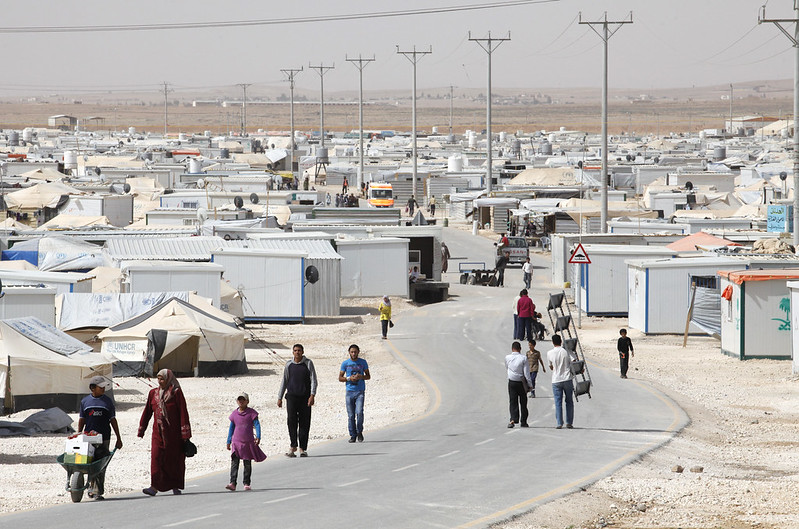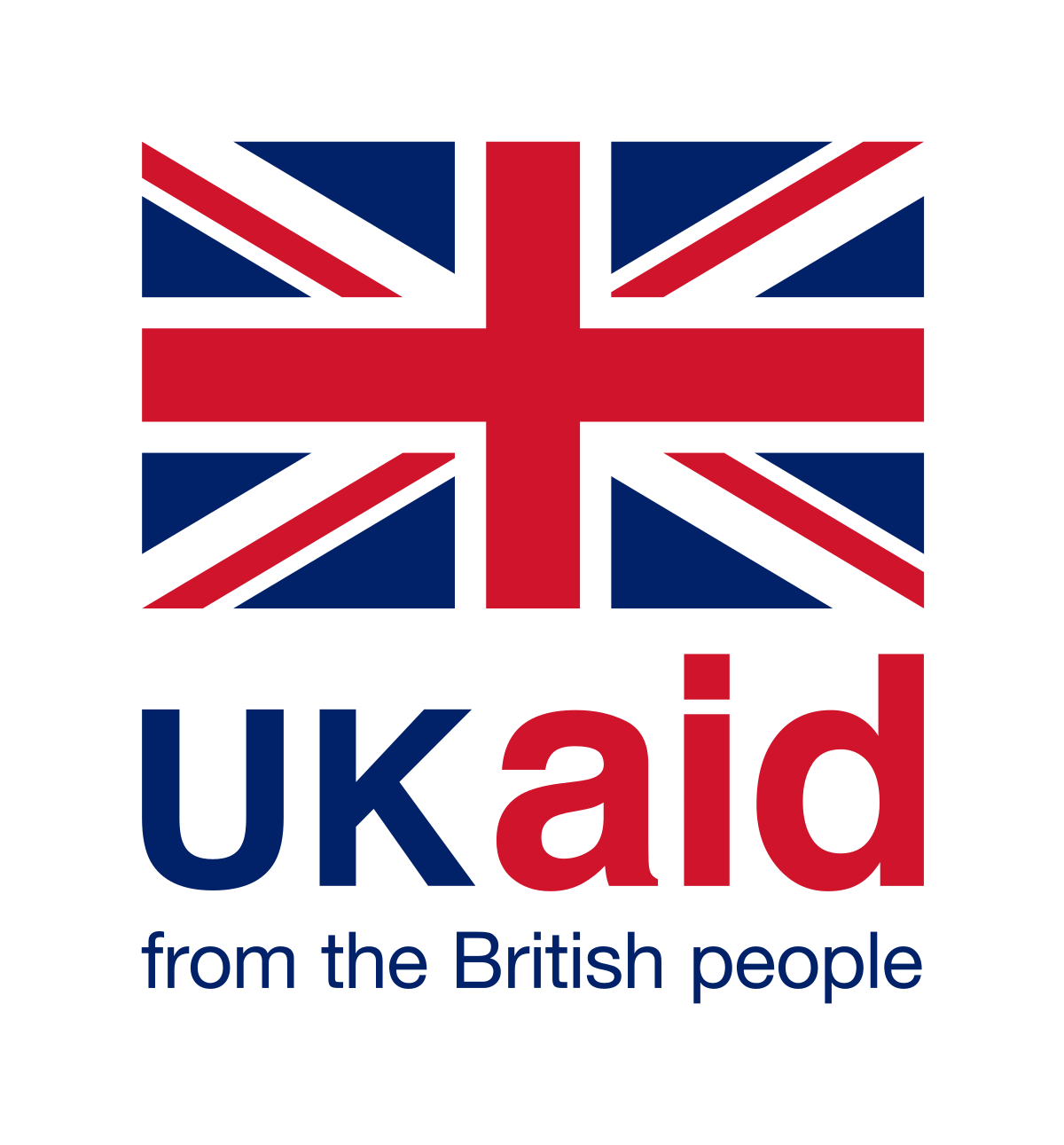Housing Subsidies: Evidence on Refugee Life Outcomes and Social Integration in Jordan

Daily life in Zaatari refugee camp in Jordan, located 10 km east of Mafraq, Jordan on June 04, 2014. © 2014 Dominic Chavez/World Bank
To learn more, see the press release, VoxDev article, and webinar recording.
To understand how this study fits within the broader evidence base on displacement, see it referenced in Sandra Rozo’s VoxDev literature review on Refugees and Other Forcibly Displaced Populations.
Abstract
Many countries have struggled to respond to the Syrian refugee crisis in a way that provides for refugees’ human needs and ensures cohesive integration into host communities. Though many policies and programs focus on immediate aid and short-term goals, individual refugee recovery and the stability of host communities are best observed on a longer time horizon. Researchers conducted a randomized evaluation of a subsidized housing assistance program for refugees in Jordan to assess its impact on their economic outcomes, psychological well-being, long-term migration decisions, and social integration into host communities. While the housing program improved refugees' housing quality and reduced average monthly expenditures in the short term, it unintentionally worsened child socio-emotional well-being and strained relations between refugees and Jordanian neighbors.
Policy Issue
Many host countries have struggled to respond to the Syrian refugee crisis in a way that provides for refugees’ human needs and ensures cohesive integration into host countries. An example of a type of program that attempts to address these needs is the provision of housing in local communities. Housing assistance programs support refugees in paying rent or renovating sub-standard housing as they settle into their new community and country. Though such programs are relatively common among the package of services provided to refugees, little is known about how they affect refugees’ economic outcomes and their integration into host communities. Rigorous evaluation could provide lessons on how policymakers can use housing assistance as both a means of humanitarian support and a development tool for local communities.
Context of the Evaluation
Since the outbreak of the Syrian civil war in 2011, millions of Syrians have sought refuge in neighboring countries. The conflict's changing intensity led to fluctuating refugee numbers, impacting social cohesion between refugees and host communities. In response, host countries like Jordan and international donors have implemented various policy measures to address both the basic and social needs arising from these evolving dynamics.
As a primary partner with host country governments, the United Nations High Commissioner for Refugees (UNHCR) formally registers and collects data about most Syrian refugees who enter Jordan. Because social and economic benefits are often tied to registration, refugees are incentivized to maintain updated records of their contact information and housing arrangements as they move to permanent locations. However, less is known about the impact of housing assistance on their ability to integrate and their acceptance by their host communities once they find housing, as well as economic and psychological outcomes or future migration patterns.
Around 80 percent of the refugee population surveyed in this study live in host communities. As individuals living in camps are not legally allowed to move into host communities, households eligible for the housing program were required to already reside in a host community. The program currently operates in Irbid and Mafraq governorates, which together host 45 percent of the country’s Syrian refugees.
Details of the Intervention
Researchers conducted a randomized evaluation of a subsidized housing assistance program for refugees in Jordan to assess its impact on their economic outcomes, psychological well-being, long-term migration decisions, and social integration into host communities. Partnering with a leading humanitarian agency in Jordan, researchers evaluated its Urban Shelter program, which provides funds to renovate sub-standard housing or cover approximately 12 months of rent. Refugee households selected for the program received approximately JOD 2,200 (USD 3,102.96). The household was responsible for finding its own apartment, negotiating a two-year contract with the landlord, and deciding how to split the grant between renovation and rent reduction.
The program consistently received more applications than it had the budget to support, so it partnered with researchers to randomly assign localities to either receive the program or form a comparison group until capacity was reached. Participation eligibility was determined by an integrated assessment of a refugee household’s vulnerability. Those who scored between the 90th percentile and 10th percentile on the assessment were randomly assigned to receive the program or not. However, those who scored in the top and bottom 10 percent were excluded from the study. Specifically, households that scored in the 90th percentile and above were considered the most vulnerable and, therefore, guaranteed assistance, while those below the 10th percentile did not receive the assistance because they often already had livable structures with minimal issues.
To measure the impact of the program and to learn more about refugees’ experiences, researchers administered the first-ever long-term survey of Syrian refugees, which collected detailed information on a range of economic outcomes, migration decisions, education levels, marriage age, health measures, and behavior and preferences. Researchers followed up with households via frequent phone surveys throughout the program. To assess the economic impact of refugees on the host communities, researchers conducted a series of market surveys on housing costs and commodity prices. They also surveyed Jordanian households on their attitudes, perceptions, altruism, and policy preferences to measure the impact of the program on social cohesion of refugee households in their communities.
Results and Policy Lessons
While the housing program improved housing quality and reduced expenditures for refugees in the short term, it also led to an unintentional and significant decline in child socio-emotional well-being and strained relations between refugees and Jordanian neighbors. Researchers identified several possible contributing factors while highlighting the need for sensitive program design in host-refugee settings. Researchers recommend pairing refugee assistance with host community support or exploring less visible forms of aid to foster social cohesion and reduce tensions.
Panel survey: Refugees tended to live in larger, younger households and reported higher rates of depression compared to Jordanians. Children of depressed parents were more likely to have worse socio-emotional outcomes. The findings reflected some degree of social integration, as forty-eight percent of Syrian children reported having Jordanian friends. Regarding return intentions, 91 percent of refugees did not plan to return to Syria until the conflict ended. However, 57 percent expressed a preference to remain in Jordan even if the conflict was resolved.
Housing expenditures and savings improved: Participating households reported reduced monthly housing expenditures by about USD 82 (to an average of USD 139.58, compared to an average of USD 221.63 among comparison households) and a small but significant increase in savings during and immediately after the program. This suggests that, despite increased hunger, households may have prioritized saving for future financial shocks. The program did not have negative economic effects on Jordanian neighbors, such as higher housing costs.
Food insecurity and health outcomes worsened: While the housing subsidy program was active, food security and self-reported health worsened: Household hunger increased, and more members reported COVID-19 symptoms. A key factor was a significant reduction in food aid received by participating households, amounting to about 10 percent of pre-pandemic monthly income. Additionally, an influx of extra household members, particularly adolescents, further diluted program benefits. By the end of the program, most impacts observed during the program–such as food security, household composition, child learning outcomes, and COVID-19–were no longer significant.
Child well-being worsened: Child socio-emotional well-being significantly declined, with effects persisting over a year after the program ended. Potential contributing factors included increased food insecurity, greater exposure to COVID-19, and changes in living arrangements within participating households. However, the negative effects on children persisted even after these factors subsided.
Social cohesion outcomes deteriorated: Notably, researchers found significant negative effects of the housing program on host-refugee social cohesion, including a deterioration in community perceptions towards Syrian refugees. Researchers suggest that increased awareness of the assistance refugees received, along with the visibility of housing-related aid (particularly construction), may have intensified tensions, especially in poorer neighborhoods. They also noted a potential link between declines in child well-being and social cohesion, tied to decreased interactions between refugee and Jordanian children.
Funding Partner













